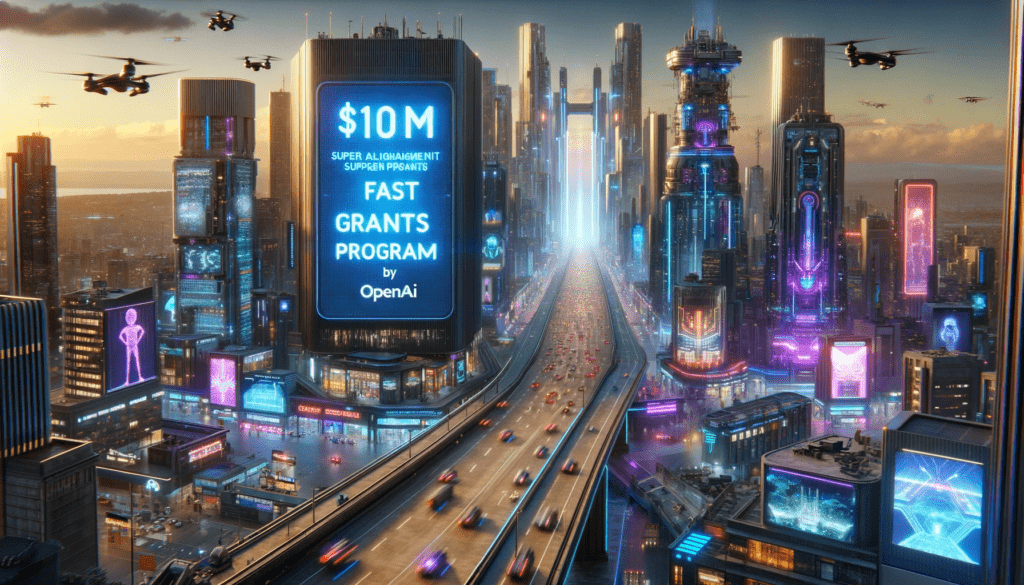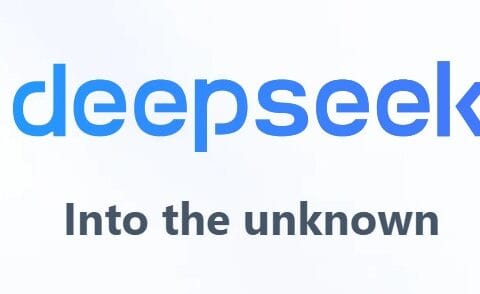Last Updated on February 1, 2024 12:09 pm by Laszlo Szabo / NowadAIs | Published on February 1, 2024 by Laszlo Szabo / NowadAIs
$10M in Grants: Superalignment Fast Grants Program by OpenAI – Key Notes:
- $10 Million Initiative: Significant financial commitment for AI safety and alignment.
- Targeting Superhuman AI: Focus on aligning AI systems that surpass human intelligence.
- Open to Various Researchers: Academic labs, nonprofits, and individuals are eligible.
- Diverse Research Areas: Emphasis on weak-to-strong generalization, interpretability, and scalable oversight.
- Fast Response Time: OpenAI commits to a quick response within four weeks.
OpenAI is for Safety
OpenAI has recently launched the Superalignment Fast Grants program, aimed at supporting technical research towards ensuring the alignment and safety of superhuman AI systems.
This $10 million grants initiative is a significant step towards addressing the challenges posed by the arrival of superintelligent AI systems within the next decade.
Understanding Superalignment
Superalignment refers to the challenge of aligning AI systems that surpass human intelligence levels.
While current alignment techniques rely on reinforcement learning from human feedback (RLHF), the advent of superhuman AI systems presents qualitatively different and more complex technical challenges.
These systems will possess capabilities that are beyond human comprehension, making it difficult for humans to supervise and evaluate their behavior effectively. For instance, if a superhuman model generates a million lines of intricate code, humans may not possess the ability to assess whether the code is safe or dangerous.
Consequently, existing alignment techniques like RLHF may prove inadequate in ensuring the alignment and safety of these advanced AI systems.
The fundamental question that arises is:
How can humans steer and trust AI systems that are significantly more intelligent than themselves?
OpenAI recognizes this challenge as one of the most crucial unsolved technical problems of our time.
However, they also believe that with concerted efforts, this problem is solvable. OpenAI sees immense potential for the research community and individual researchers to make significant progress in this area.
Hence, the Superalignment Fast Grants program aims to rally the best researchers and engineers worldwide to tackle this challenge.
Superalignment Fast Grants

In collaboration with former Google CEO Eric Schmidt, OpenAI has launched the Superalignment Fast Grants program, offering $10 million in grants to support technical research focused on superalignment.
The grants are available to academic labs, nonprofits, and individual researchers.
Additionally, OpenAI is sponsoring the OpenAI Superalignment Fellowship, a one-year fellowship for graduate students that provides a $75,000 stipend and $75,000 in compute and research funding.
The fellowship aims to empower talented graduate students to contribute to the field of alignment, even if they have no prior experience in this specific area.
The application process for the grants and fellowship is straightforward, and OpenAI commits to providing a response within four weeks of the application deadline.
The deadline for applications is February 18th. OpenAI encourages researchers to apply, especially those who are excited to work on alignment for the first time.
The grants program is open to a wide range of research directions, and OpenAI is particularly interested in funding projects related to weak-to-strong generalization, interpretability, scalable oversight, and other areas such as honesty, chain-of-thought faithfulness, adversarial robustness, evals and testbeds, among others.
Weak-to-Strong Generalization
One of the research directions emphasized by the Superalignment Fast Grants program is weak-to-strong generalization.
As humans, we often struggle to supervise superhuman AI systems effectively on complex tasks.
In such cases, it becomes essential to ensure that these models can generalize from weak supervision to strong performance.
This research direction seeks to understand and control how strong models generalize from limited or imperfect supervision.
To illustrate this concept, consider the challenge of supervising a larger, more capable model with a smaller, less capable model.
Can the powerful model generalize correctly on difficult problems where the weak supervisor can only provide incomplete or flawed training labels?
This research direction aims to leverage the remarkable generalization properties of deep learning models and explore methods to improve their ability to generalize from weak supervision.
OpenAI has already made promising progress in this area, as described in their recent paper on weak-to-strong generalization.
Interpretability: Unveiling the Black Box
Another crucial research direction supported by the Superalignment Fast Grants program is interpretability.
With modern AI systems often being inscrutable black boxes, understanding their inner workings becomes essential to ensure alignment and safety.
Interpretability refers to the ability to understand the internals of AI models and use this understanding to detect potential misalignments or deceptive behavior.
Interpretability is crucial for several reasons.
- First, it provides an independent check to determine the success or failure of other alignment techniques.
- Second, interpretability can help detect instances where models attempt to undermine human supervision, even if they excel at hiding such behavior during evaluations.
- Lastly, developing useful interpretability tools can uncover valuable insights into model behavior, which can aid in the development of stronger alignment techniques.
There are two main approaches to interpretability: mechanistic interpretability and top-down interpretability.
Mechanistic interpretability focuses on reverse-engineering neural networks to understand their functioning at a granular level. This approach aims to break down complex models into basic building blocks, such as neurons and attention heads.
OpenAI has already made strides in this direction, as evidenced by their work on transformer circuits and other related research.
On the other hand, top-down interpretability takes a more targeted approach by locating and understanding specific information within a model without fully comprehending its complete inner workings.
This approach is particularly useful for detecting misleading or dishonest behavior in AI systems. OpenAI’s efforts in this area include research on locating and editing factual associations in language models and developing techniques for understanding and controlling the inner workings of neural networks.
Scalable Oversight: AI Assisting Humans
Ensuring effective oversight of AI systems is another critical aspect of superalignment.
With the complexity and scale of future AI systems surpassing human capabilities, humans will struggle to evaluate their outputs accurately.
For instance, reviewing a million lines of code or comprehending the operations of an AI-driven business might be beyond human capacity. To address this challenge, scalable oversight aims to leverage AI systems to assist humans in evaluating the outputs of other AI systems on complex tasks.
The principle behind scalable oversight is that evaluation is easier than generation.
Humans may find it challenging to identify bugs in code, but once a bug is identified, it becomes easier to validate its presence.
In this context, AI systems can play a crucial role in critiquing the code written by other AI systems, thereby assisting humans in evaluating the safety and reliability of these advanced AI systems.
OpenAI encourages research in this area and is particularly interested in projects that focus on developing open-source evaluation datasets and strategies to study scalable oversight.
Conclusion
OpenAI’s Superalignment Fast Grants program addressing the challenges of superalignment has become an urgent priority.
The grants program and fellowship provide a platform for researchers, engineers, and graduate students to contribute to the field of alignment, even if they are new to this area of research.
By supporting research directions such as weak-to-strong generalization, interpretability, and scalable oversight, OpenAI aims to drive progress and develop robust solutions to steer and trust AI systems that surpass human intelligence levels.
Frequently Asked Questions:
- What is the Superalignment Fast Grants program?A $10 million initiative by OpenAI to support research ensuring the safety and alignment of superhuman AI systems.
- Who can apply for these grants?Academic labs, nonprofits, individual researchers, and graduate students can apply.
- What is the main focus of the research grants?The grants focus on addressing the technical challenges posed by AI systems that surpass human intelligence levels.
- Are there any specific research areas OpenAI is interested in?Yes, OpenAI is particularly interested in weak-to-strong generalization, interpretability, scalable oversight, and other related areas.
- What is the application process for these grants?Applicants can apply through a straightforward process, with OpenAI providing a response within four weeks of the deadline.









